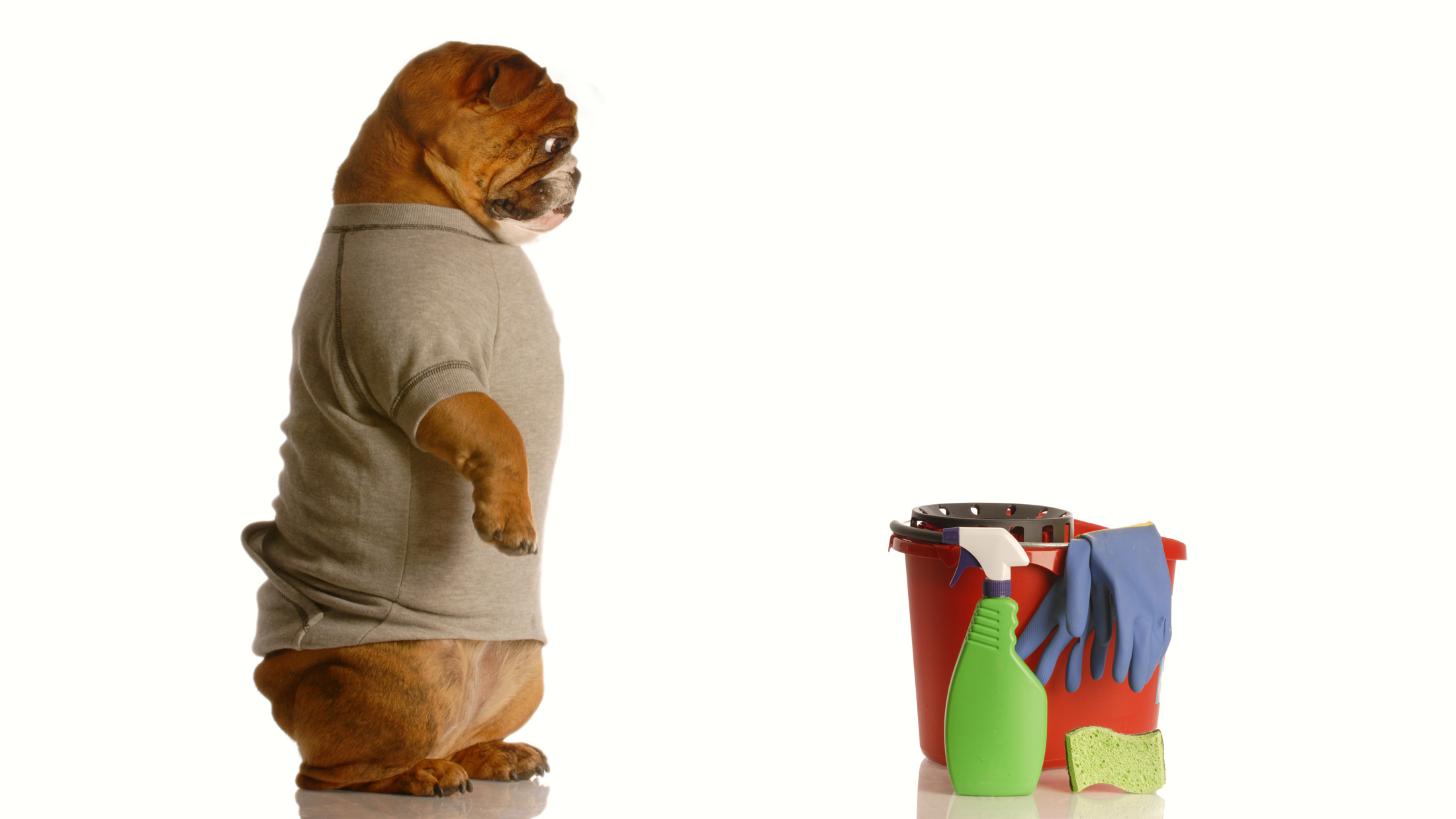Send your question to Umbra!
Q. I recently learned that we have a serious mold problem in our basement and attic. It’s mostly confined to old cardboard boxes and the insulation paper. Our insurance doesn’t cover mold damage and we can’t afford to hire professionals, so I’m looking for an environmentally safe way to kill the mold and stop it from coming back. Right now I’m using a mixture of water, vinegar, baking soda, borax and a few drops of eucalyptus citriodora essential oil to wash the woodwork, plaster walls, and concrete floor. For the attic, I’m considering using a “mold-bomb” fumigant, which is claimed to be safe, but I’m concerned about the health effects of the chemicals used to kill the mold.
Green with fungi,
Eric T.
Pittsburgh, PA
A. Dearest Eric,
In a horror movie, right now we’d all be screaming, “No, Eric! Don’t go into the basement! Or the attic!” Alas, this is real life, and you must face your fuzzy green invaders head-on to prevent the mold from spreading. Otherwise, it could pose a slew of troubling respiratory complications for you and your family before it takes over the house.
The good news: It is often possible to tackle mold cleanup jobs yourself, depending on their size and severity. Public health departments often use the following rule of thumb: If the mold patch is 10 square feet or smaller, go solo. If it’s 100 square feet or larger, call in the pros. In between? It’s a judgment call. You mentioned your finances are an issue, and I can sympathize: Professional mold remediation can run into the thousands of dollars. But you also mentioned the problem is serious. My fungal inspection certification has lapsed, so I can’t make this call for you. But your state health department does offer advice to homeowners – and I highly recommend you get in touch to discuss your game plan.
Provided you get the green light to attack your own mold problem, you’re in for a careful and thorough cleaning. Molds — fungi that break down organic matter –reproduce through spores. Don’t freak out, but those spores are found all over the place, including in our homes. Luckily, they’re only a problem if they land on a moist surface, which provides the nourishment they need to thrive. In other words, you have a mold problem because you have a moisture problem. Finding and stopping that water is your first order of business . (If you don’t know the source of the leaks, the EPA is here to help.)
All dried out? Get ready to wage a full assault by suiting up with a respirator, gloves, and goggles to protect yourself from the mold spores. You may also want to section off the contamination zone with plastic sheeting and rig up a suction fan to vent the air outdoors. Now, get those moldy cardboard boxes outta there. And I’m afraid any porous materials the mold has infiltrated — like carpet, ceiling tiles, or your insulation paper — need to go too. Once the area is secured, there’s no shortcut around this next step: scrubbing the mold out with a cleaning agent and hot water, rinsing thoroughly, then making sure it dries completely.
So do you need any specialized products, such as commercial mold removers, bleach, or mold foggers, to do the job? Most experts say no. The EPA simply suggests using “detergent” as your cleaning agent. Spraying the area with disinfectants or cleaners alone won’t do; what’s crucial is physically removing the mold from your home. What’s more, many public health departments and other experts actively discourage the use of biocides – fungi-slaying chemicals, including bleach – absent special circumstances, such as someone in your home having a compromised immune system. As the EPA puts it: “In most cases, it is not possible or desirable to sterilize an area; a background level of mold spores will remain – these spores will not grow if the moisture problem has been resolved.”
Your detergent of choice is on the right track: Ingredients like vinegar, baking soda, and borax come recommended from several sources as eco-friendly mold vanquishers (though I should point out that borax has some hormone-disrupting issues of its own). Other natural born killers include tea tree oil, grapefruit seed extract, and hydrogen peroxide. If your concoction is working to completely remove the mold, stick with it.
There is one specialized weapon that might be worth investing in: a HEPA (high efficiency particulate air) vacuum. These vacuums employ a fine filter to trap leftover mold particles after your scrub-and-dry session is complete (just be sure to keep your respirator on when you empty it, and dispose of the contents in a sealed plastic bag). They cost a few hundred dollars, but home improvement stores and equipment rental businesses may be able to loan you one at a fraction of the price.
Good luck with your scrubdown, Eric. Though I doubt it’ll be much fun, you can take solace in the fact that you’ve avoided adding funky and unnecessary chemicals to your funky fungal infestation.
Decompositionally,
Umbra



